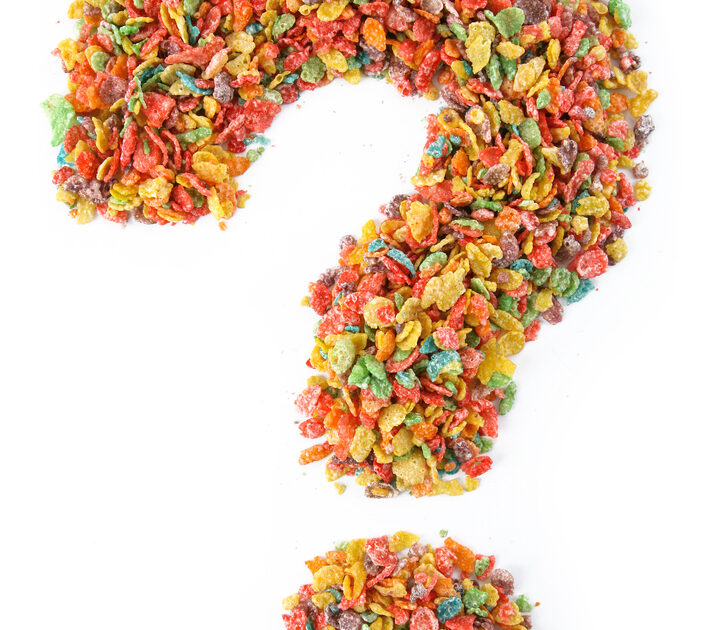Why Do Humans Love Artificial Colors in Food Anyway?

Even if you’ve somehow managed to avoid the 24-hour news cycle, only glancing at it where it’s unavoidable (like the awkwardly blaring television parked over my bank teller’s head), you’ve probably seen this news: Major food companies are removing artificial colors and flavors from long-time favorite foods on what seems like an almost weekly basis these days.
The roster is long. It includes iconic food brands General Mills, Kellogg, Kraft, and Nestlé, as well as fast food restaurants and major coffee chains. Even PepsiCo has replaced aspartame in its longtime best-selling Diet Pepsi soda. The move away from artificial colors and flavors, the companies claim, is in response to growing consumer concern over the unnaturalness of the ingredients, some of which have been connected to serious health issues. The European Union, for example, bans most artificial colors because of a strong correlation with behavioral issues in children such as ADHD.
As consumers reluctantly bid farewell to bright blue cereal and neon orange macaroni and cheese, it brings up a valid question: Why are we so drawn to artificially colored foods in the first place?
“Colour is the single most important product-intrinsic sensory cue when it comes to setting people’s expectations regarding the likely taste and flavour of food and drink,” reports Teatro Naturale International. “To date, a large body of laboratory research has demonstrated that changing the hue or intensity/saturation of the colour of food and beverage items can exert a sometimes dramatic impact on the expectations, and hence on the subsequent experiences, of consumers (or participants in the lab).”
In other words, the brighter the color, even if it’s artificial, the more we expect to taste a certain flavor, “colour cues influence our food and drink-related behaviour in a number of different ways,” explains Teatro Naturale. “Food colouring undoubtedly plays an important role in driving liking and the consumer acceptability of a variety of food and beverage products.”
Even though in nature, a grape may be more of a muted reddish purple or light green in color, when in a processed food, those same colors somehow underwhelm the senses, giving us the perception that it won’t be as bright a flavor as the bright violet or neon green artificial colors more common. In some cases, the less intensely colored food can actually make us less interested in consuming those processed foods altogether. It’s almost as if artificial flavors are their own mother nature, and require the enhanced colors to convey the food’s artificial flavor just the same way a ruby colored strawberry tells us it’s ripe and sweet.
Will removing artificial colors decrease sales of once-colorful breakfast cereals and other foods? Only time will tell, of course. And Big Food brands will surely do whatever they can to keep that from happening. There’s also the possibility that it will inch us closer to consuming the real versions— you know, those actual fruits and vegetables colored however nature made them—instead of factory-extruded colorless knock-offs. And that can’t possibly ever be a bad thing.
Find Jill on Twitter and Instagram
Related on Organic Authority
Kraft Pulls Artificial Colors from Some Mac & Cheese Products
General Mills Will Remove Artificial Flavors and Colors from Its Fruit Snacks
Mmm Mmm Good: Campbell’s Soup Ditches Artificial Flavors and Colors
Cereal image via Shutterstock

